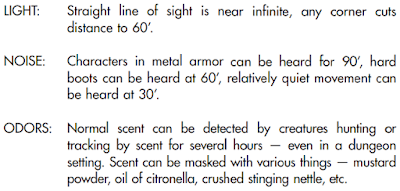An Encounter with Goblins

What follows is a case study. It began with a random encounter result of goblins. Then the LEDGE method (outlined here ) was applied. It produced a module-worthy encounter. It was then run in actual play. This is a recap of that play identifying the critical parts of the encounter through the lens of the LEDGE method. Unbeknownst to the party, one of the NPCs they disclosed their quest to was secretly a spy. Because of this indiscretion, the enemies in the following encounter knew the PCs were coming and had set up an ambush. The party consists of: Kizya , Female Human Champion ( 7th level Fighter ) Zoltar , Male Human Magsman ( 8th level Thief ) Nadja , Female Human Magician ( 6th level Magic-User ) Jada , Female Half-Elf Prefect Thaumaturgist ( C5/MU5 ) Zogath , Male Half-Orc Curate Myrmidon ( C4/F6 ) Viktor , Male Human Myrmidon ( 6th level Fighter ) Nadja also made the mistake of drinking liquor at the tavern from the bartender’s personal stash and is suffering fro...





